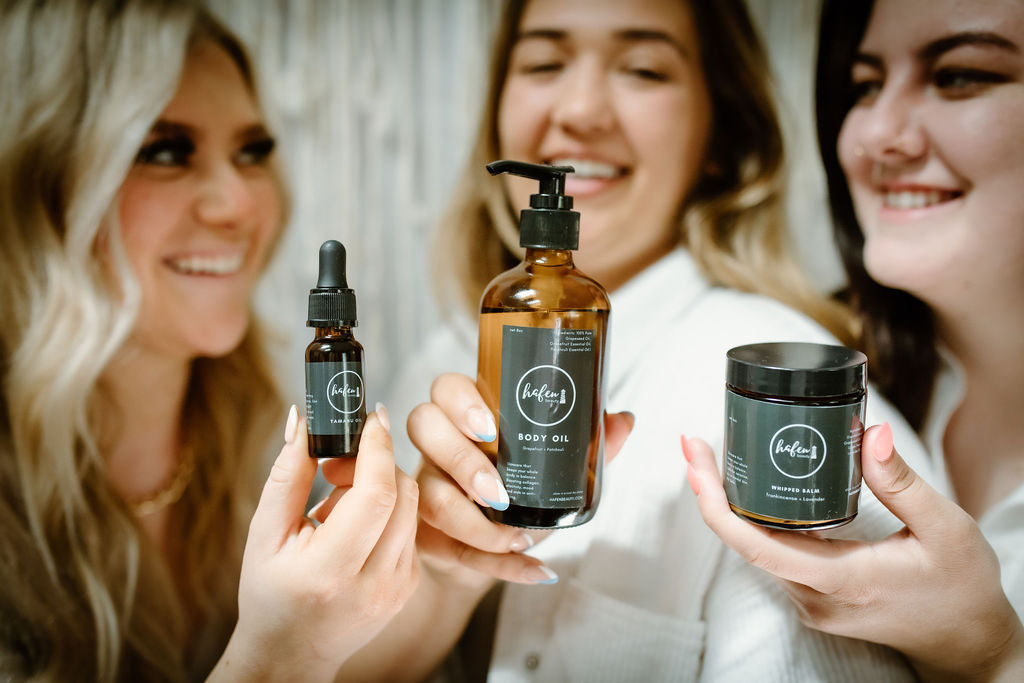
It is possible we'll experience different skin types at different stages of our life. Most skin types are due to environment and diet, however, skin type could also be determined because we are predisposed due to genetics. All skin types can be supported and eventually helped with sebum regulation. At some point in life, we may experience every skin type because of our lifestyle or current environmental factors. It is good to know what each skin type is so you can correctly treat it if you begin to experience one or another.
Some of the major complaints when it comes to skin types are the complications because of them. Each skin type presents a variety of symptoms whch can be frustrating to work with and awkward, depending on our season of life. Teens and young adults often show acne flare-ups and inflammation as their hormones regulate. Individuals in their late 20s and 30’s commonly present oily skin depending on their environment, genetics, and nutrition. Women in their 40s present more often with dry skin as hormones shift and skin ages.
The 4 skin types: Normal, Dry, Oily, and Combination.
Knowing your skin type will help you optimize your skincare. Educating yourself on the four skin types will help you prevent certain complications.
Characteristics of Normal Skin Type
As noted by Skinnymedspa:
- Free from skin blemishes
- Pores are fine, hardly visible
- Skin tone is even, clear, and smooth
- Radiant complexion
- Skin is neither too oily, or too dry
- Good blood circulation
- Hardy against the elements and irritants
If you have a normal skin type, it is good to continue a good hygiene routine with gentle cleansers and moisturizers.
Characteristics of Dry Skin Types
- Skin tightness
- Rough patches
- Itchy
- Ashy
- Scaling or peeling
- Cracked
- Red
Dry skin is due to a lack of moisture. This could be environmental or a lack of hydrating internally. When not cared for it can become a problem causing deep cracks and bleeding in the skin or damaged skin. Dry skin can be caused by Heat, environment, over-bathing, harsh ingredients, and aging.
How to treat dry skin:
- Use a humidifier - add moisture back into your environment.
- Dress appropriately - keep skin protected from wind and cold exposure.
- Limit your bathing - excessive washing pulls oil out of the skin, leaving it dry and chapped.
- Check ingredients - avoid skincare products that use water and synthetic ingredients. (The water in products can dry the skin out, and the preservatives can make the condition worse).
- Moisturize - use an oil base moisturizer and go for a thicker balm to lock the moisture into the skin.
Characteristics of Oily Skin
- Shiny face
- Excessive oil production
- Acne
- Blackheads/whiteheads
- Large visible pores
Oily skin is caused by a variety of health reasons and environmental factors. Skin changes because of fluctuating hormones and/or the humidity in the air. Oily skin is most common in teens and young adults. It can feel like an endless battle dabbing the oil off your skin. Solutions like acids or prescriptions can promise immediate results but can exacerbate the problem in the long run.
Genetics can play a role in oily skin, yet research has found that excess of the hormone testosterone can play a bigger role in oily skin. The good news is there are many way to balance your hormones which include regulating the sebum production of your skin. Stress can also cause a change in hormones and signal more oil production as a protective mechanism.
Most information will lead those with oily skin to avoid oil products altogether. However, science says, oil breaks down oil, and the skin proves it. If you want to regulate your oil production incorporate non-comedogenic (non-clogging) oils into your daily regimen. Starting with an oil cleanser and slowly switching your water-based products out with oil-based is a good way to troubleshoot your skin.
Ways to treat Oily Skin
- Wash Your Face - It is good practice to wash 2x daily to ensure your pores are getting cleaned out and eliminating bacteria in the cells.
- Moisturize - avoid moisturizers with water in it and grab an oil cleanser. Your body is needing regulation.
- Find a nutrient dense mask - Try to avoid products that dry you out and instead pick up an oil cleanser or oil based mask to help regulate your oil production.
- Add Green Tea to Your Routine - as a natural antioxidant it could help bring more nutrients to the skin, encouraging sebum regulation.
- Avoid Prescriptions - Avoid using over-the-counter prescriptions as they inhibit oil production and break down the skin’s protective lipid barrier.
Characteristics of Combination Skin
- Crusty areas of skin
- Oily areas of skin
- Acne in Tzone
- Dry skin in the Winter
- Shiny skin in the Summer
Combination skin is where some parts of the skin are oily and others are dry. Individuals with combination skin will present acne in their Tzone (forehead and middle of eyebrows) and then dry chapped cheeks. When finding products to help with their skin, it can be disheartening that what you use on one part of your skin you can’t use on the other part.
Combination skin can be caused by fluctuating hormones, genetics and also the ingredients in skincare products.
Ways to treat Combination Skin
- Simplify your skincare routine - Cleanse, tone and moisutrize should be your staple routine, using very simple ingredients.
- Use a Toner - using a toner that balances your skin’s PH will help the skin’s sebum production to regulate in all areas of your skin.
- Avoid Water Products - use products with a non-comodogenic oil that will help restore the skins oil production.
- Moisturize - find a nutrient dense moisturizer that restores your skin’s lipid barrier and sebum production. Look for a product high in vitamins A, D, E and K, which work together to balance skin tone and sebum protection.
- Exfoliate - gently exfoliate as you treat your combination skin to ensure pores are being cleaned out.

